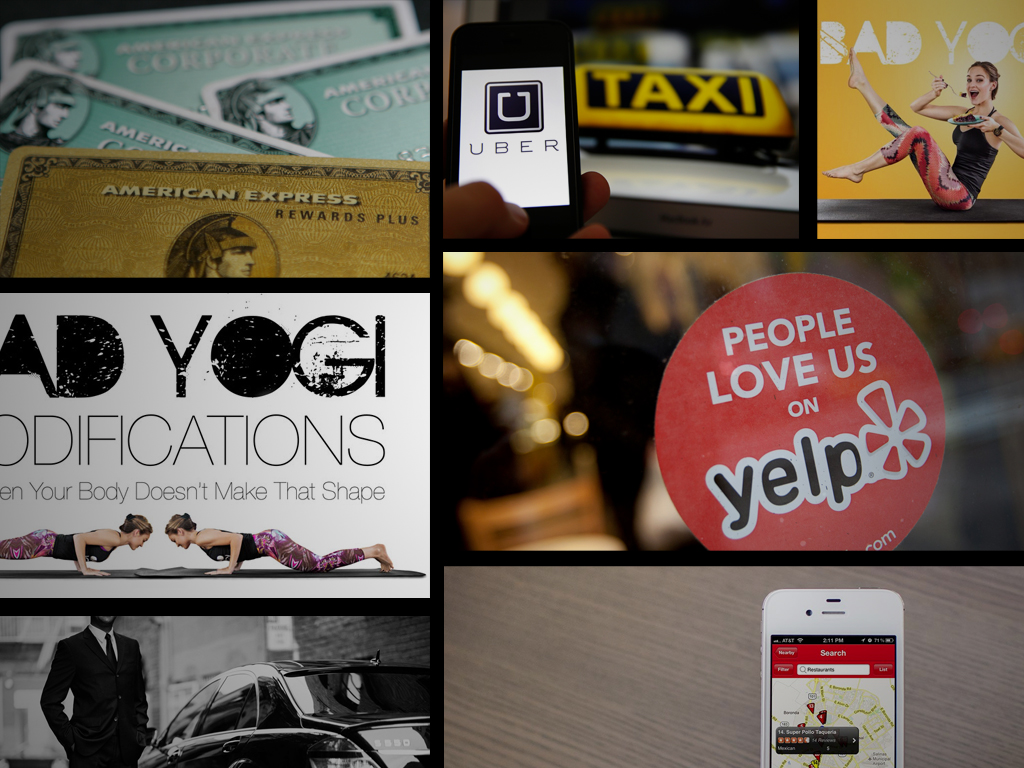Just like the sentiment behind astronaut Neil Armstrong’s infamous “One small step for man, one giant leap for mankind” line on the moon, the digital marketing industry is itself in an era of profound change, which, in turn, demands an entirely new way of conceptualizing the brand-consumer relationship. That’s according to Mark Bonchek, chief catalyst at ThinkOrbit, a firm that helps brands create social business strategies.
Citing Boston’s Big Dig public works project, which changed the face of downtown Boston and the subsequent adaptation GPS systems had to make for new roads, Bonchek said the marketing landscape has undergone similar changes, “but we’re still walking around with old mental maps of how we do marketing.”
Like a GPS system, these “new mental maps” will require upgrading the “old software in our brains.”
What’s more, the pace of change in the marketing industry is accelerating with shorter company lifespans and quicker technology development.
“This isn’t repaving the road,” Bonchek said at Adobe’s recent Digital Marketing Symposium in New York. “This is taking what’s above ground and putting it below.”
The Evolution of Communication
Until the digital revolution, communication was one-way. But then the audience started talking back.
“We went from Guttenberg to Zuckerberg,” Bonchek said.
What’s more, the consumer audience has become a community, he said, likening the phenomenon to an Amish barn-raising in which individuals band together with a common purpose, which is seen on sites like TripAdvisor, Yelp, Netflix, Spotify, and Amazon Reviews, where consumers come together to solve problems.
The result is “fundamentally a new model of value creation” in which brands are “getting better at personalizing the connection…as well as listening and learning,” he said.
The challenge for brands and marketers, therefore, is how they can enable and empower that peer-to-peer connection in a way in which the brand/marketer gets to play a role as well.
“Content marketing is only the beginning,” Bonchek said. “What’s the context for your content?”
That means there are multiple marketing models to unlearn, he said.
“We still ride horses, but there’s a better form of transportation today,” Bonchek added.
Brand Orbits: The New Social Solar System
Instead of traditional models, Bonchek advocates for a model he calls Brand Orbits, or: Ongoing Relationship Beyond Individual Transaction.
In these so-called Brand Orbits, Bonchek said, “The brand is at the center of the solar system and all of your constituencies are in orbit around you – including employees, customers and influencers…and your job is to build gravity to pull them in.”
When pulled into orbit, the customer becomes more like a user or member, he said. These orbits surrounding the brand have all kinds of different touchpoints, most of which are interactions, but which are interspersed every now and again with transactions.
Brands can also build gravity by tapping into a given customer’s friends, family and followers, so “then their orbits become your orbits,” Bonchek said.
Instead of measuring loyalty in terms of how often consumers repeatedly purchase a product, it becomes, “What’s the frequency of that orbit and what’s the strength of the affinity?” Bonchek said.
In other words, brands need to shift from pushing consumers through the funnel to pulling them in to their orbits by “engaging communities with social experiences that sustain relationships and fulfill a shared purpose,” Bonchek said.
8 Brands Creating Ongoing Consumer Relationships
Here are eight brands doing just that to generate gravity today, according to Bonchek.
1. Coca-Cola
The brand’s Freestyle Machines, which allow consumers to customize their drink choices, also have QR codes and/or chips so that consumers can create recognizable profiles and essentially tell the machine, “I’ll have my usual,” Bonchek said.
2. Starbucks
“You may think it’s a coffee company, but it’s actually a third place business – the area between home and work where you connect with other people,” Bonchek said.
The brand creates the pull that brings consumers in with gravity generators like free Wi-Fi and comfortable seating, he said.
3. Sephora
The beauty retailer’s Color IQ service scans the surface of a consumer’s skin with a handheld device, which then assigns the skin a Color IQ number, which is then matched to a “scientifically precise foundation,” the brand says.
4. GoPro
Per Bonchek, GoPro is “not in camera business, they’re in the media business. They’re using the camera to create content to share with others.”
“I met the CMO of GoPro and told him about a time-lapse video I shot in Vegas and his first words were, ‘Did you upload it to community?’” Bonchek said. “They’re using content to pull people in.”
5. Nike
The Nike+ Running App allows users to plot runs, track times and compete with others, but it also allows users to connect with friends in their orbits and to hear cheers and applause on runs, Bonchek said.
6. Walgreens
The drugstore chain allows shoppers to earn points for purchases, as well as for healthy activities tracked by wearables like Fitbit or Nike+ FuelBand, which, Bonchek said, is another great way to engage.
7. McCormick
The spice brand’s FlavorPrint effort is a personalization service that allows users to create a Personal Flavor Profile based on likes and dislikes and provides recommendations for products, recipes and flavors, based on their preferences.
8. EpicMix
The ski app, which Bonchek describes as “like Nike+, but on a mountain,” allows users track vertical feet, connect with friends and share photos, which, in turn, helps ski resorts drum up repeat business, which is not always easy to do in an industry populated by thrillseekers who want new scenery and challenges.
“They’ve created an entire social network on the mountain,” Bonchek said.
How Can Other Brands Follow The Leaders?
According to Bonchek, it’s about finding a shared purpose with consumers and a source of intrinsic value.
Bonchek also recommends marketers seek out what he calls “little data.”
“If big data is what companies know about us that we don’t know they know…little data is what we know about ourselves,” Bonchek said, pointing to information in apps like the Nike+ Running App and EpicMix, as well as McCormick’s Personal Flavor Profile.
The eight gravity-generating brands also create social currency, such as support for friends on a run, as well as photos and recipes.
“When you have this whole engagement and relationship, it’s about how to monetize that without a bait and switch,” Bonchek said, returning to the coffee example.
Dunkin Donuts’ mission statement is, “Make and serve the freshest, most delicious coffee and donuts quickly and courteously in modern, well-merchandised stores,” which Bonchek said is good, “but very transactional and completely utilitarian.”
Starbucks, on the other hand, says its mission is “to inspire and nurture the human spirit – one person, one cup and one neighborhood at a time.”
According to Bonchek, the key test for brands is to ask themselves if a consumer’s mission is their mission as well. Or, simply put: “Would you put [the brand’s mission] on a T‑shirt?”
The Starbucks mission is much more T‑shirt friendly, which is in part why it is a gravity-generating brand.
“Focus on the shared purpose and then check: Are you building relationships to drive transactions or are you embedding yourself within the relationships?” Bonchek said.
What’s your take on the solar system model?


